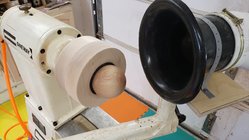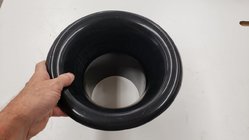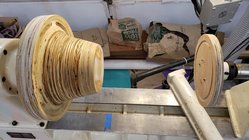Hi, I am just finishing up a a new shop I'm building on my house! It is a glorious and luxurious 270 feet! I can now have an actual table saw. I'm just sooo happy. In any case, dust collection comes to mind as this shop actually has walls and a roof. I have a few questions.
1) Do people use DC for their lathe and do they find it effective/useful
2) Do people recommend a big open mouth sort of thing on the ground behind the lathe ( lathe up against a wall ) or some gaping maw up at lathe level behind the work
3) How many cfm is necessary? Seems like either way there's going to be a great big opening and that that would require way more cfm then a fairly closed system.
a) I have cabinet saw ( yay! ) and a 24/36 lathe, I may get some other peripheral tools but nothing that will be critical, maybe a chopsaw.
b) The shop is basically 10' X 30' X ~8' H minus a section for the house's AC condensor, so I might have to run some hose a fair distance.
4) I have no room. I can't believe it. It's like 50% larger than my lean-to but I'm already out of room ( in my mind ). So maybe one of those wall mount ones would be better?
5) Given the above, maybe I should have something on wheels and just move it to the appropriate spot when needed. That said lazyness may lead to less consistent use.
6) Whatever you recommend, do you have one you could sell me
Thanks for your thoughts,
Raif
1) Do people use DC for their lathe and do they find it effective/useful
2) Do people recommend a big open mouth sort of thing on the ground behind the lathe ( lathe up against a wall ) or some gaping maw up at lathe level behind the work
3) How many cfm is necessary? Seems like either way there's going to be a great big opening and that that would require way more cfm then a fairly closed system.
a) I have cabinet saw ( yay! ) and a 24/36 lathe, I may get some other peripheral tools but nothing that will be critical, maybe a chopsaw.
b) The shop is basically 10' X 30' X ~8' H minus a section for the house's AC condensor, so I might have to run some hose a fair distance.
4) I have no room. I can't believe it. It's like 50% larger than my lean-to but I'm already out of room ( in my mind ). So maybe one of those wall mount ones would be better?
5) Given the above, maybe I should have something on wheels and just move it to the appropriate spot when needed. That said lazyness may lead to less consistent use.
6) Whatever you recommend, do you have one you could sell me
Thanks for your thoughts,
Raif

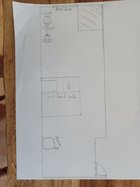
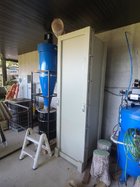
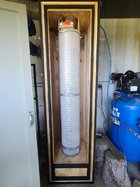
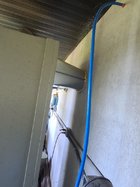
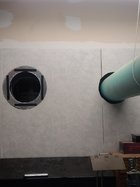
![DSC_0783[1].JPG DSC_0783[1].JPG](https://www.aawforum.org/community/data/attachments/40/40138-85fc8ea4592531bc2d1a11ca935287c3.jpg?hash=hfyOpFklMb)
![DSC_0784[1].JPG DSC_0784[1].JPG](https://www.aawforum.org/community/data/attachments/40/40139-06c3f26789645c68e2562e66ddb35ea2.jpg?hash=BsPyZ4lkXG)

